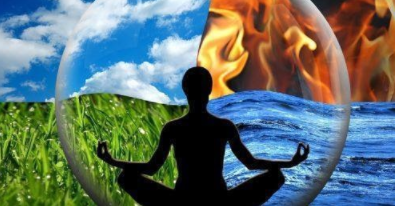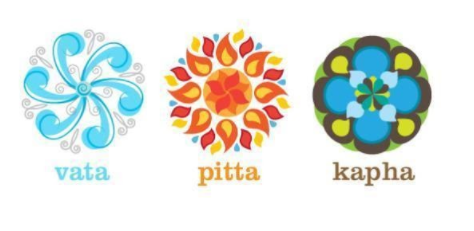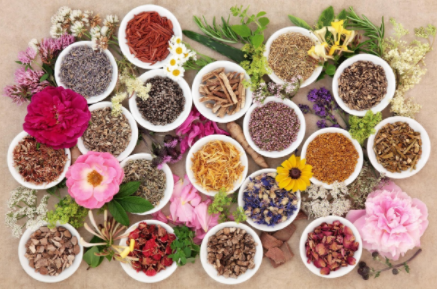
1. What is Ayurveda and what diseases does it help with?
Ayurveda is a science of life based on many years of experience and knowledge preserved and passed down through the centuries. Its homeland is India, where five thousand years ago the ancient doctrine of man and the world around him began. Today, Ayurveda has a comprehensive application in the treatment of many diseases and in the approach to environmentally friendly lifestyle.
The basis of the used methods and therapies is the establishment of the root cause of the disease states and the disturbed energy balance in the human body. Many remedial alternative therapies can be administered separately or in parallel with conventional medicine.
Ayurveda has a positive effect on diseases of the joints, urinary system, gastrointestinal tract, circulatory system, allergic reactions, skin diseases, depression and much more. Ayurvedic medicine is comprehensive and environmentally friendly.
2. What are Doshi and what do they have to do with the diseases?
The world around us is made up of five fundamental elements.
According to Ayurveda, these are:
- fire
- water
- earth
- air
- space
As a science of human health, balance and achieving inner harmony with the outside world, Ayurveda also preaches that each person has three basic energies – the so-called Doshas who are Pitta, Vata and Kafa. They are in a different ratio in each of us and are decisive for our individual characteristics.
According to ancient Indian philosophy, we carry the energies from birth and when the balance in us is disturbed, the body becomes susceptible to disease. Only the restoration of energy levels can restore the harmony we need inside and outside of us.

3. Ayurveda and the eternal question of the meaning of life
The meaning of life reveals the four key goals of life. The first is Dharma and it has to do with duty and responsibility. Therefore, it is considered to be prevalent among people with leadership qualities and opportunities to lead and protect others.
Prosperity is associated with Art, which develops qualities such as entrepreneurship and trade. The third key goal is Moksha and involves the search for knowledge, ie. these are the people with an attitude towards science. Kama is the last group where emotions and feelings prevail. Here the meaning of human existence is connected with philosophical self-knowledge.
4. What is the secret of well-being?
Ayurveda accepts that each of us needs to make sense of and see our own path in order to follow it consciously. This philosophy of life preaches understanding and points out ways to achieve harmony.
5. What is the basis of healing therapies in Ayurveda?
Ayurvedic practices aim at a healing and restorative effect. They are based on the knowledge and experience of the essence of man and the world accumulated over the centuries. Indian medicine is a combination of methods that are aimed at eliminating the original source of the disease.
There are a number of universal recommendations that are suitable for use by anyone in our time. Ayurveda offers therapies, most of which are suitable for various disease states. At the same time, the philosophy of an environmentally friendly way of life is preached in order to achieve peace and harmony.
6. Ayurveda and nutrition
The type, method of preparation and intake of food are related to human health. Ayurvedic cuisine is rich in flavors and odors, but most importantly, it is subject to the principles of nature.
Herbs and spices, which are an essential element of healing therapies, are widely used. It is recommended that the portions are not large, and many dishes are consumed hot.

7. Does Ayurveda have dietary rules?
Balance dominates Indian philosophy in terms of food as well. It is good to start the day with a glass of warm water, then have breakfast with fruits and vitamin-rich products.
Lunch includes meat or vegan products. Dried and fresh fruits, as well as raw nuts are suitable for afternoon breakfast. Dinner is light with more leafy vegetables or lean soups.
8. Does Ayurveda help with eating disorders?
Overeating and hunger are polar states, both of which are a manifestation of emotional breakdown and disturbed harmony. The return of harmony can be achieved through various practices. In addition to a proper healthy menu, yoga is a way of daily physical activity.
Instructors recommend overweight people to perform the “Moon Greeting” and “Camel” poses. They are suitable for dealing with digestive problems, but also for overcoming stress.
Metabolism is also improved with procedures for warming the body with herbal decoctions. The richness of spices and their skillful combination in Indian cuisine is very suitable for switching to a healthy diet.
9. What are the benefits of detoxification?
No one is insured against the accumulation of harmful substances and toxins in the body, but more importantly, they must be periodically eliminated from it. Therefore, detoxification is often a useful method of cleansing. There is even a healing effect that Ayurveda doctors use for most allergic reactions or skin diseases.
But this applies to all health problems, because it is the poisons in us that open the way to disease. Most toxins accumulate in the liver, stomach and intestines, to which detoxification is particularly relevant.
In Ayurveda, herbal decoctions and oils are widely used for this purpose. They also have a restorative and healing effect. Ancient science explains purification as the main way to get rid of our sick poisons, and in healthy people it has a prophylactic effect so that they do not get sick.
10. Does Ayurveda cure viruses?
In addition to treatment, Ayurveda practices have prophylactic applications. A variety of herbs are used in Indian medicine, most of which are suitable for hot decoctions.
Teas with ginger, cinnamon and black pepper in a variety of combinations have anti-inflammatory and antiviral applications. In order for the immune system to be strong, therapeutic massages are performed and exercises for proper breathing are practiced.
11. The benefits of aromatherapy
Fragrances are an element of overall healing and recovery. Ayurveda uses a number of aromatic aqueous solutions with orange oil, mint, eucalyptus, etc. Even some of them have anti-inflammatory effects.
12. Why you should practice yoga?
Keeping the body and mind in a good health is a complex process in which yoga exercises play an important role. Asanas are a way to combine moderate physical activity and clear the mind of harmful thoughts and problems. It has been proven that yoga poses are also useful for certain diseases, which makes them popular all over the world.

13. Is self-medication possible?
It is necessary to have a good knowledge of the practices and their application under the guidance of an Ayurvedic doctor, so that some therapies can be applied on your own. But yoga practices, aromatherapy, diet and meditation are within everyone’s reach.
14. Where can we get herbs, oils and medicines for home use?
In order to be guaranteed original, eco and quality products, it is best to look for them in specialized Ayurveda centers. There they will advise you on how to apply them.
15. What is Ayurvedic diagnosis?
Like everything in this ancient doctrine, the diagnosis of diseases is subject to natural methods. It can only be used by trained healers who have eight approaches to monitoring a person’s health. These are the pulse, urine, tongue, stools, speech, appearance, vision and touch.
16. What are the differences between Ayurveda and modern medicine?
Unlike conventional medicine, Indian medicine seeks the source of the disease. Ayurveda treatment practices are also subordinated to the holistic approach. The goal is to restore energy balance, not just target therapy on symptoms.
17. Do Ayurveda therapies have contraindications?
Their big advantage is that they use only biological ingredients. It is very rare for a side effect to occur, but it is essential that they are used only by a certified therapist.
18. What is the modern application of Ayurveda?
Due to stress, tension and illness, more and more people are looking for an alternative to achieving a better life. In Ayurveda, they find ways to restore the disturbed balance. This becomes a philosophy for making sense of life, a way to get rid of negative thoughts, exercises to restore tone and achieve harmony.
That is why all over the world there are Ayurveda clinics and centers where you can benefit from millennial experience. In Bulgaria, therapies, yoga courses and practices are organized under the guidance of occupational therapists.
19. How does a day go in an Ayurveda center?
Most of these courses are attended for medical purposes, so the individual health status of each is initially monitored.
Normally, the day starts at around 7.00 in the morning with a warm-up. Yoga exercises are practiced for half an hour, followed by breakfast. The day continues with medical procedures tailored to the health problem or condition of each visitor. Apart from healing, the therapies have a rejuvenating and toning effect.
In the afternoon everyone has time for rest and aqua procedures, which are prescribed by a specialist if necessary. In the afternoon there are daily consultations with the therapist, and those interested can attend educational lectures on the philosophy of the Indian medicine.
Dinner should not be later than 7 pm, before going to bed you should meditate and there are practices for healing breathing. According to the state of your health, additional time is planned for yoga, purifying therapies and activities in the nature.
20. How are Ayurveda practices done at home?
The goal of the program is to feel a surge of new energy after a few days, to feel relief from the health problems and to build on learned practices at home. Many of the exercises and recipes are quite possible to take place at home.
Photos: Ayurveda Bansko



0 Comments